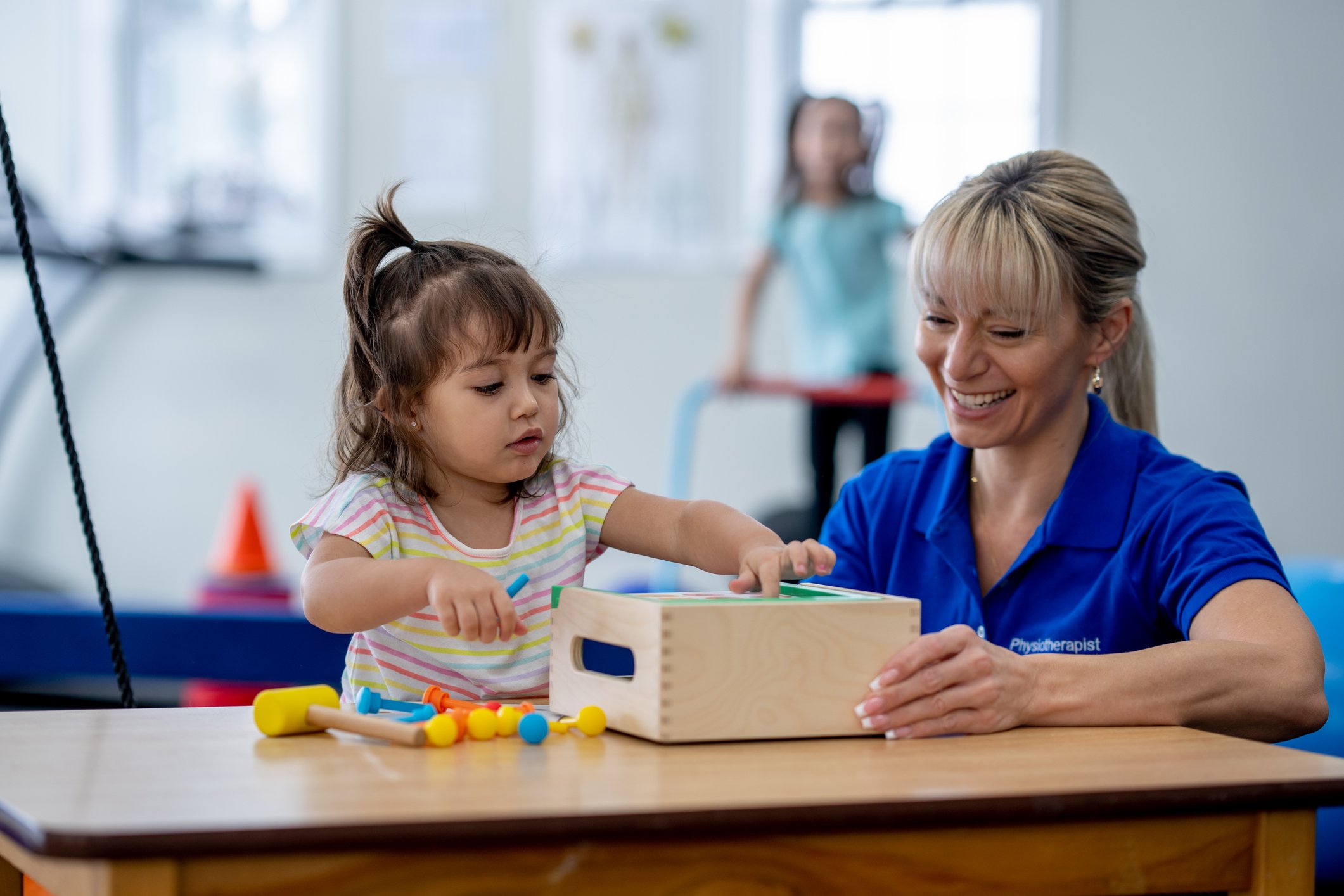Does your child seem to be especially clumsy or hyperactive? This could be a sign that they need some help building their body awareness skills, or proprioception. Today, we’re going to explain what proprioception is, why it’s an important skill to have, and how our occupational therapists in Winder, GA, can help your child achieve better body awareness. Plus, get expert tips on activities you can do with your child to build these skills at home.
What Is Proprioception?
Proprioception (also called body awareness or kinesthesia) is the ability to sense the location and movement of your body and its parts. This skill is how you can do things like eat without having to look at your food or think about where your mouth is. It’s also important for activities like riding a bike, playing piano, or bowling.
Why Is Proprioception an Important Skill to Have?
If your child doesn’t have strong proprioception, they may experience many challenges such as:
- Frequently tripping, falling, or bumping into things
- Dizziness or motion sickness
- Trouble with spatial awareness
- Uncoordinated or ineffective movements
- Using too much or too little force or pressure
- Rough play style
- Abnormally high or low energy levels
- Frequently chewing on toys, clothes, etc.
- Difficulty focusing or calming down
How Occupational Therapists Help Children Improve their Proprioception
Our occupational therapists work with children to help them build up their body awareness through proven, play-based treatments. One goal is to give children the opportunity to use their body to the max in a safe way. We can do this through “heavy work,” which gives them the chance to really put their movements to the test and get out some of their excess energy.
This also helps them gain more awareness of how their body is moving, how much force they’re using, and so on to improve their proprioception. Some of the activities we might do for heavy work include:
- Climbing and obstacle courses
- Jumping, skipping, and crashing (safely!)
- Pushing or pulling heavy objects
- Adding weights to common items (like a pencil)
- Doing resistance-based activities like pushing against a wall
- Applying pressure to various joints of the body
Tips for Parents to Help Your Child Build Their Proprioception Skills at Home
There are many simple activities you can do at home with your children to help them build their proprioceptive skills. Plus, these activities have the benefit of using up some of your child’s excess energy and can even help them calm down once they’ve gotten enough proprioceptive input.
- Let them jump – jumping on a trampoline, bed, couch, or even the floor is a great activity that exercises the body and provides good physical input.
- Encourage climbing – whether they climb on a jungle gym at the park, climb the stairs, a tree, or even a slide, this is another great activity.
- Do funny walks – you can try wheelbarrow walking (where you hold your child’s legs and they walk on their hands) or crab walking (where they walk on their hands and feet).
- Play with clay – your child may enjoy squeezing, stretching, and rolling clay, Play-Doh, or silly putty.
- Make them into a burrito – your child may also enjoy being wrapped up tightly in a blanket like a burrito to give their body pressure input.
Reach Out to Let’s Communicate
If you think your child may be struggling with proprioception, Let’s Communicate is here to help. Reach out to us at (678) 963-0694 to schedule an evaluation with our occupational therapy team today.


